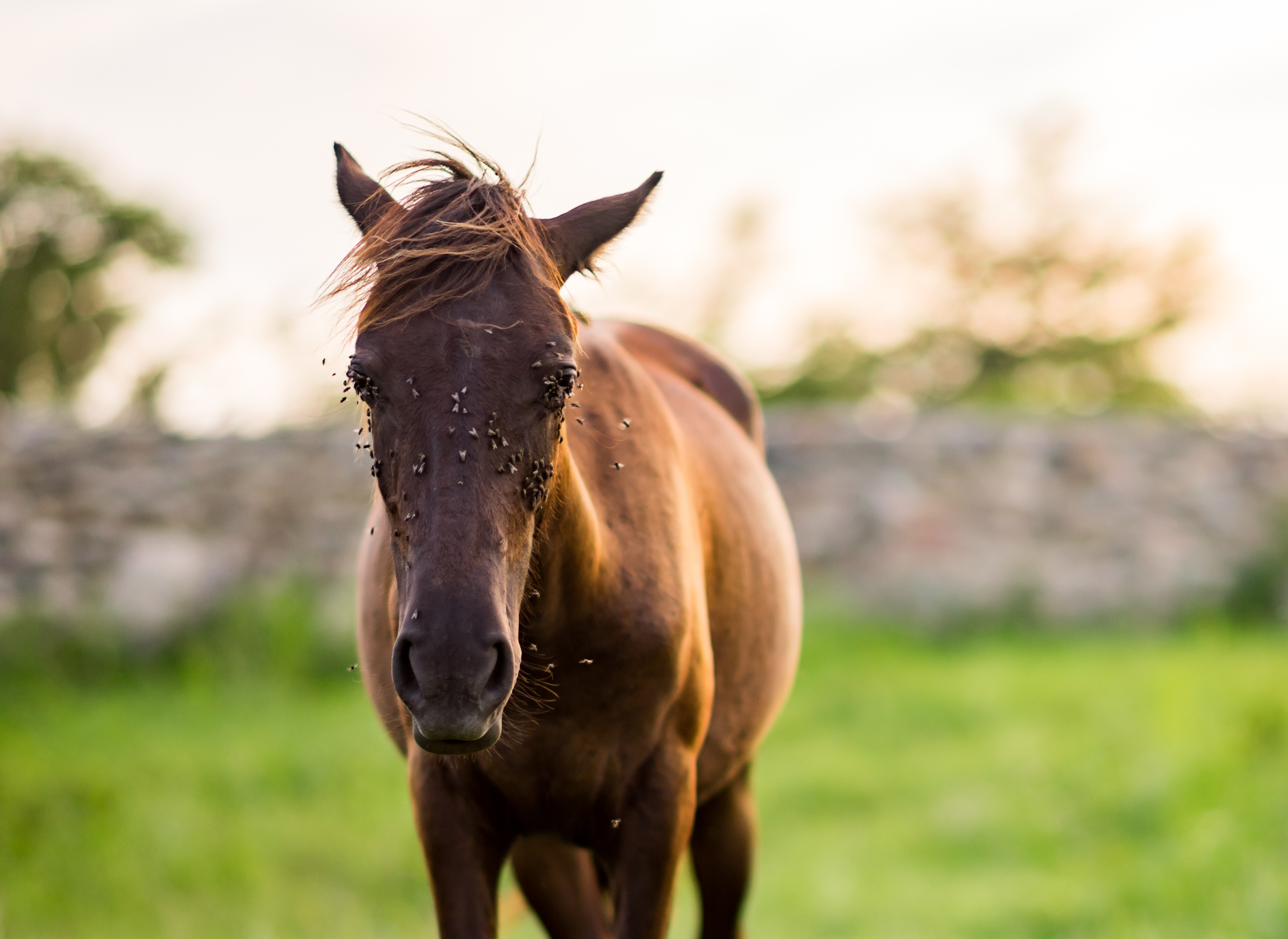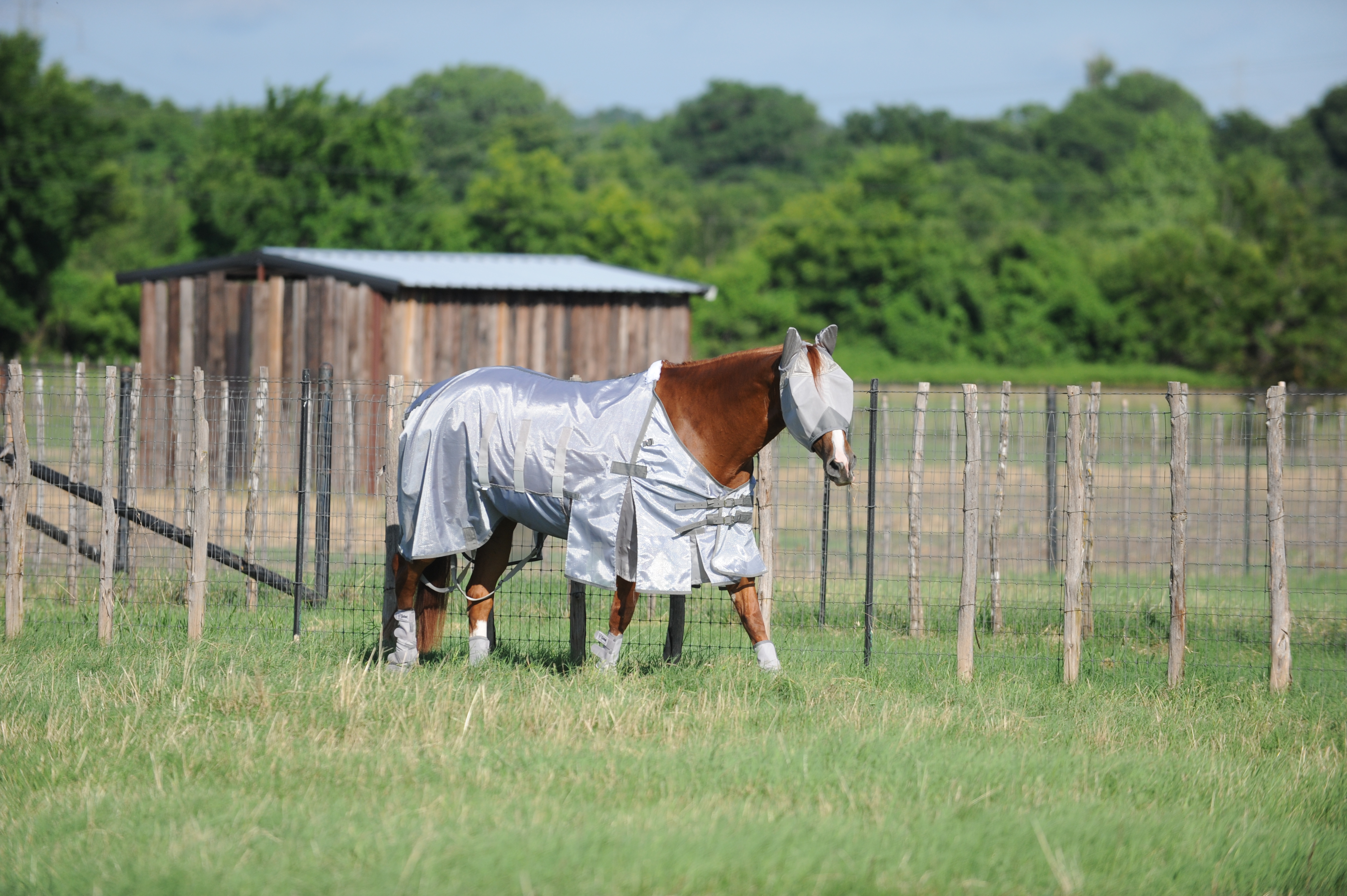
Whether you live in a region with a rainy season, close to marshes or in Humidity Central, the “ick” factor increases exponentially when water-loving pests come out to dine. The victims du jour? Why, your unsuspecting horses, of course.
Small aquatic biters such as black flies and midges are harder to control than their land-lubber cousins because they usually come from distant creeks, streams or rivers rather than your local manure pile. Night-biting midges are the worst, creating misery and summer itch wherever they go.
Stabling horses can help—unless they are followed indoors. Then, you’ll need superfine screens, fans and liberal applications of permethrin-based repellents to keep the biters at bay. Another trick: dabbing petroleum jelly on vulnerable equine body parts.
Just when you’ve had your fill of midges, look out for the bigger wetland breeders! If you’ve never been tormented by a horse fly or deer fly, which can grow up to 2 inches long, the pain of their bites is hard to forget. Horses can go into a frenzy when they strike. And they can spread diseases like equine infectious anemia (EIA). Have you heard enough yet?
Permethrin is the weapon of choice here, too. However, these flies are primarily daytime biters that prefer the great outdoors. So keep your horse in when the sun is out—or provide access to the barn as refuge.

And let’s not forget that bane of everyone’s existence, the lowly but dangerous mosquito. You’ve probably heard that elimination of stagnant water (like in clogged gutters or open ditches) helps eradicate their breeding grounds. But it’s not a surefire preventative against deadly West Nile virus, Eastern equine encephalomyelitis (EEE), Western equine encephalomyelitis (WEE) and Venezuelan equine encephalomyelitis (VEE), all of which can be spread to horses by this infernal bloodsucker. Experts recommend using animal-safe premise sprays and traps, bringing your horses in at dusk (when most species are the most active), and above all, vaccinating them against these illnesses.
Other aquatic insects like mayflies and caddis flies can transmit Potomac Horse Fever and contaminate water that’s left out in the open. To help prevent this, dump and disinfect outdoor water buckets daily (which is always good practice anyway).
Another way to ward off wet-season flies is to outfit your horses with lightweight fly sheets, fly boots and/or fly masks. Of these, fly masks are arguably the most essential, because they protect particularly sensitive areas.
Just ask Dr. Joe Davis of the Piedmont Equine Practice in The Plains, Virginia. “From the veterinary standpoint, fly masks are useful to help prevent conjunctivitis—swelling of the tissues around the eyes—which is often insect-borne,” he explained. “Fly masks are also useful at ameliorating the torment of flies. That misery can result in running the fenceline to escape the flies, and that can result in lost shoes or, worse, injury.”
So there you have it: Wet-season flies are the worst! But now you know how to help your horse survive them.
Safe, durable and affordable. No matter the insect, Cashel has a solution for you. www.cashelcompany.com






